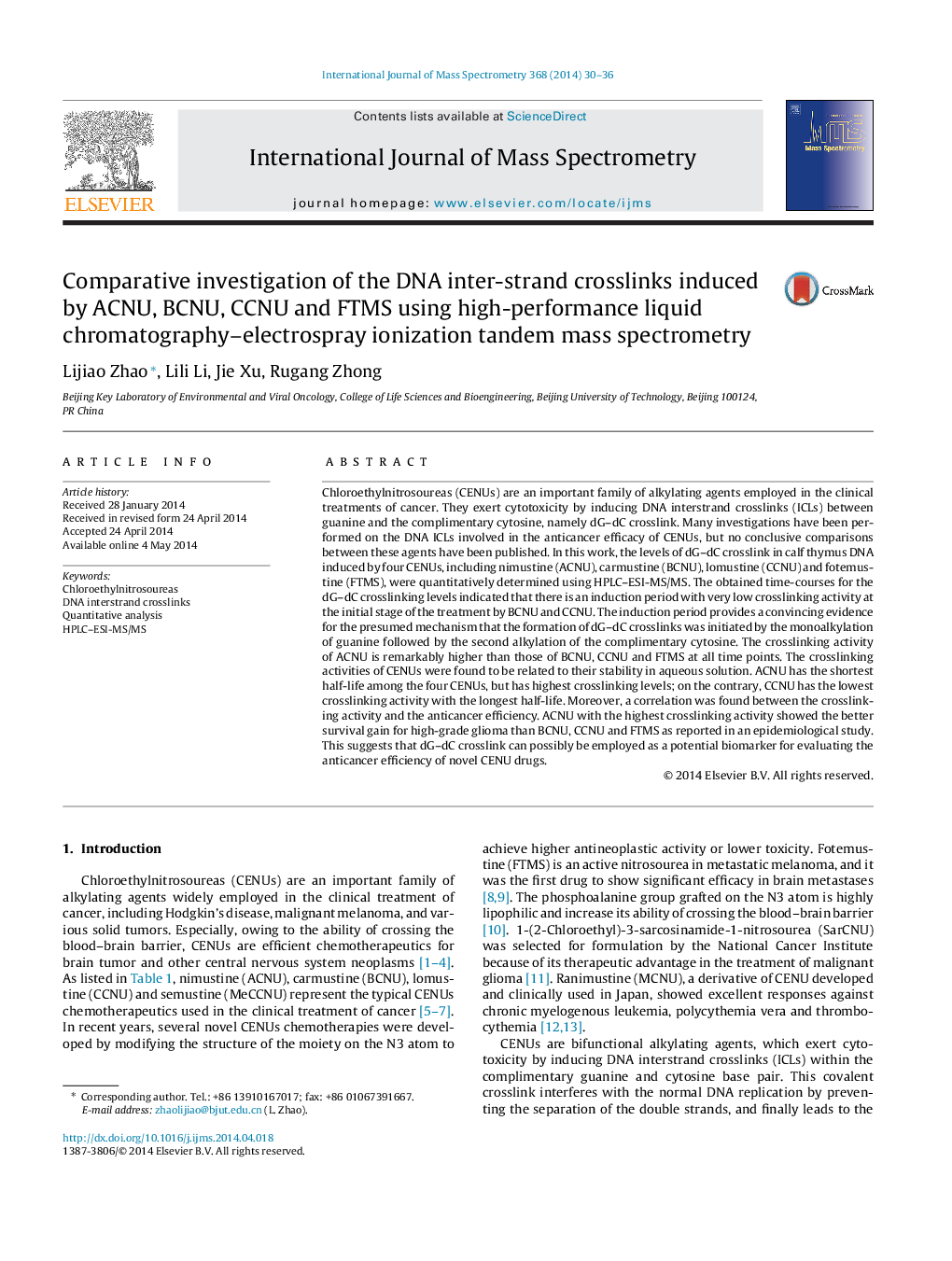| Article ID | Journal | Published Year | Pages | File Type |
|---|---|---|---|---|
| 1193753 | International Journal of Mass Spectrometry | 2014 | 7 Pages |
•DNA interstrand crosslinks induced by CENUs were determined using HPLC–MS/MS.•The crosslinking activities of 4 types of CENU were compared.•The crosslinking level induced by ACNU is much higher than the other 3 CENUs.•A correlation was found between crosslinking level and anticancer efficiency.•G–C crosslinking level is a potential biomarker for anticancer activity of CENUs.
Chloroethylnitrosoureas (CENUs) are an important family of alkylating agents employed in the clinical treatments of cancer. They exert cytotoxicity by inducing DNA interstrand crosslinks (ICLs) between guanine and the complimentary cytosine, namely dG–dC crosslink. Many investigations have been performed on the DNA ICLs involved in the anticancer efficacy of CENUs, but no conclusive comparisons between these agents have been published. In this work, the levels of dG–dC crosslink in calf thymus DNA induced by four CENUs, including nimustine (ACNU), carmustine (BCNU), lomustine (CCNU) and fotemustine (FTMS), were quantitatively determined using HPLC–ESI-MS/MS. The obtained time-courses for the dG–dC crosslinking levels indicated that there is an induction period with very low crosslinking activity at the initial stage of the treatment by BCNU and CCNU. The induction period provides a convincing evidence for the presumed mechanism that the formation of dG–dC crosslinks was initiated by the monoalkylation of guanine followed by the second alkylation of the complimentary cytosine. The crosslinking activity of ACNU is remarkably higher than those of BCNU, CCNU and FTMS at all time points. The crosslinking activities of CENUs were found to be related to their stability in aqueous solution. ACNU has the shortest half-life among the four CENUs, but has highest crosslinking levels; on the contrary, CCNU has the lowest crosslinking activity with the longest half-life. Moreover, a correlation was found between the crosslinking activity and the anticancer efficiency. ACNU with the highest crosslinking activity showed the better survival gain for high-grade glioma than BCNU, CCNU and FTMS as reported in an epidemiological study. This suggests that dG–dC crosslink can possibly be employed as a potential biomarker for evaluating the anticancer efficiency of novel CENU drugs.
Graphical abstractFigure optionsDownload full-size imageDownload high-quality image (292 K)Download as PowerPoint slide
